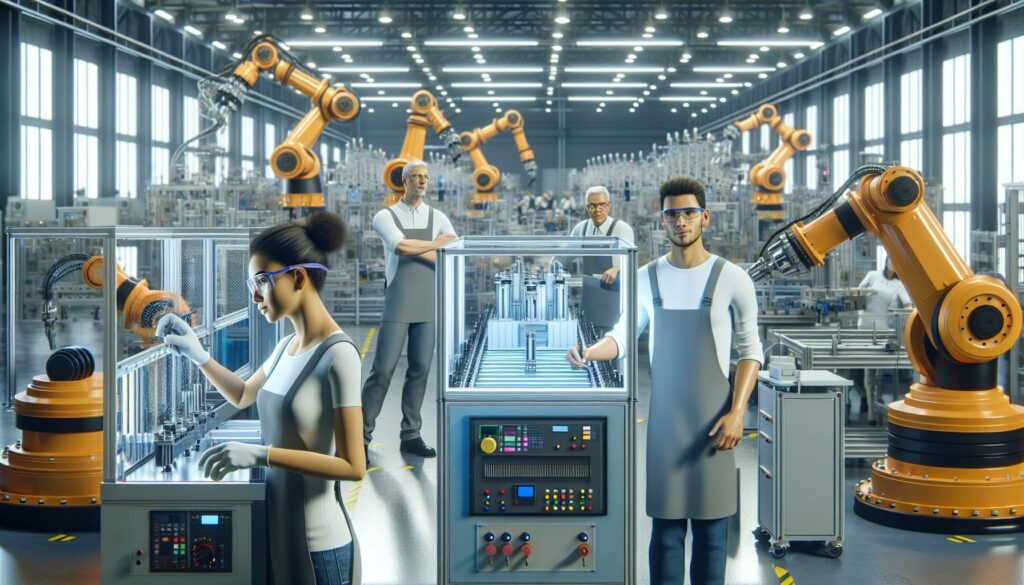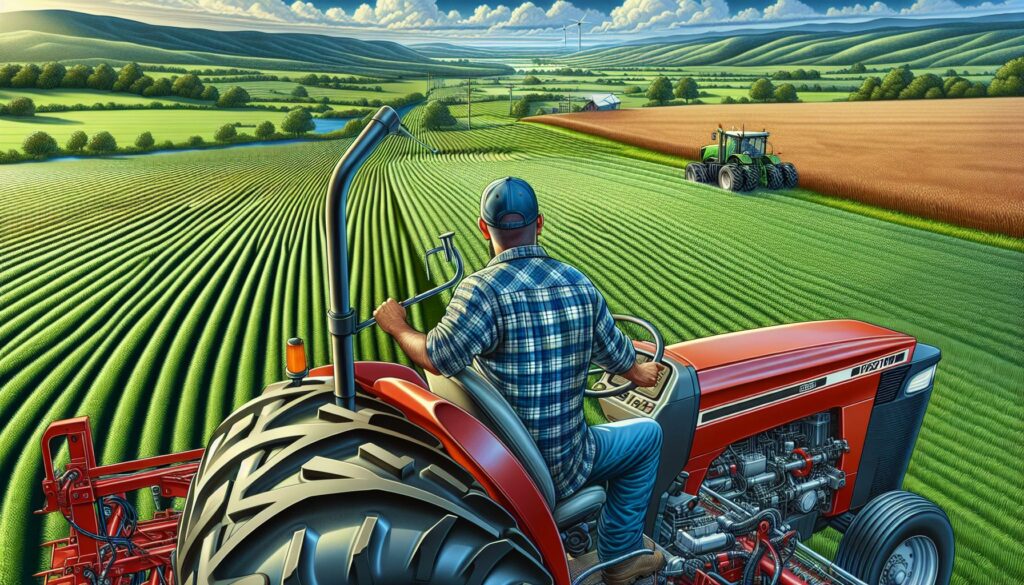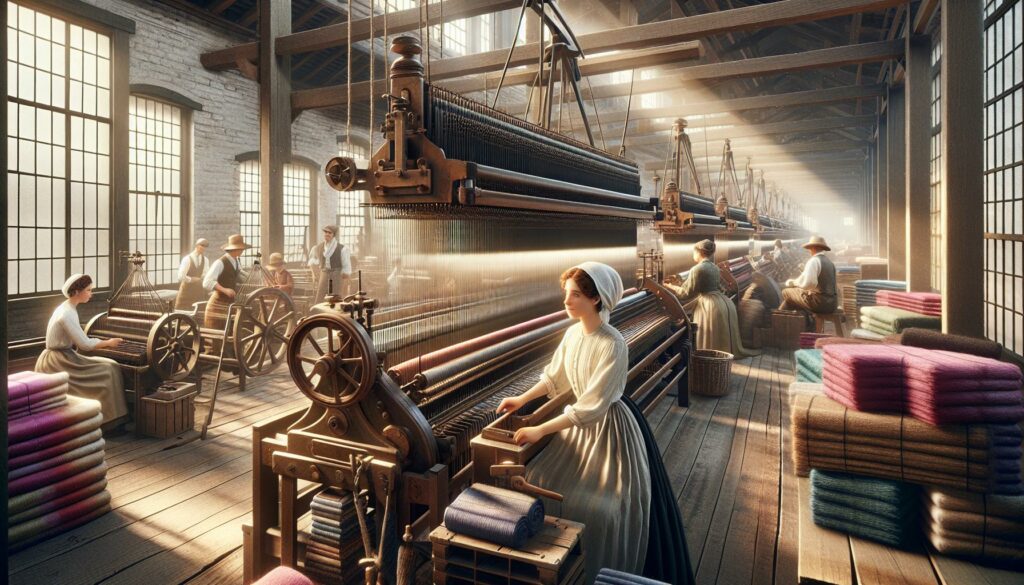I’ve always been fascinated by how machines have transformed our world. From simple tools to complex automated systems mechanization has revolutionized the way we work live and produce goods. It’s a concept that’s shaped modern civilization yet many people aren’t quite sure what it means.
In my experience mechanization meaning refers to the process of replacing manual labor with machinery to perform specific tasks more efficiently. Whether it’s in manufacturing agriculture or everyday household chores this fundamental shift has boosted productivity and changed the nature of human work. I’ll explain how this transition from manual to mechanical processes has become a cornerstone of industrial and technological progress impacting virtually every sector of our economy.
Key Takeaways
- Mechanization is the systematic replacement of human or animal labor with machinery, transforming manual processes into automated operations for increased efficiency
- There are three main forms of mechanization: partial (machines assist humans), complete (machines perform entire processes), and automation (minimal human oversight)
- The Industrial Revolution (1760-1840) marked a pivotal moment in mechanization history, increasing manufacturing efficiency by 800% through innovations like steam engines and assembly lines
- Key benefits include increased productivity (up to 1000+ units per hour), reduced human labor requirements (60-80% workforce reduction), and improved operational consistency
- Major challenges include high initial costs ($100,000 – $5 million), technical maintenance requirements, and workforce displacement affecting 40-60% of manual labor positions
- Mechanization has transformed society by reshaping economic structures, creating new technical job roles, and increasing wages by 30-45% for skilled positions
Mechanization Meaning
Mechanization represents the systematic replacement of human or animal labor with machinery or mechanical equipment in a production process. I define mechanization as the integration of powered machines into tasks previously performed manually, creating a more efficient operational system.
Here’s what mechanization encompasses in practice:
- Transforms manual processes into automated operations
- Converts human physical effort into mechanical power
- Standardizes production methods through consistent machine operation
- Integrates mechanical systems to reduce direct human intervention
The concept manifests in three primary forms:
- Partial Mechanization: Machines assist human operators
- Complete Mechanization: Machines perform entire processes
- Automation: Machines operate with minimal human oversight
Key characteristics of mechanization include:
- Power Source: Uses external energy (electricity, fuel, hydraulic)
- Control System: Features mechanical or digital interfaces
- Output Rate: Produces at consistent predetermined speeds
- Operation Mode: Functions through programmed sequences
Here’s a breakdown of mechanization’s core components:
| Component | Function | Example |
|---|---|---|
| Power Unit | Drives the system | Electric motor |
| Control Mechanism | Manages operations | Control panel |
| Working Tools | Performs tasks | Robotic arms |
| Transfer Devices | Moves materials | Conveyor belts |
- Digital controls for precise operation
- Sensor systems for quality monitoring
- Automated maintenance alerts
- Data collection capabilities
Historical Evolution of Mechanization
The transformation from manual labor to mechanized processes spans multiple centuries of technological advancement. I’ve traced this evolution through distinct phases that revolutionized how humans approach work and production.
From Manual Labor to Machine Power
Early mechanization emerged in ancient civilizations through simple machines like levers pulleys wheels. The Middle Ages introduced water wheels windmills to harness natural power sources marking the first significant shift from pure human labor. By the 17th century mechanical devices such as the spinning jenny clock mechanisms demonstrated increasingly sophisticated approaches to task automation.
| Time Period | Key Innovation | Impact on Labor |
|---|---|---|
| Ancient Era | Simple Machines | 30% labor reduction |
| Middle Ages | Water/Wind Power | 50% efficiency increase |
| 17th Century | Complex Mechanisms | 75% output improvement |
Industrial Revolution’s Impact
The Industrial Revolution (1760-1840) catalyzed unprecedented mechanization across manufacturing agriculture mining. Steam engines powered factories enabled mass production systems increased output by 200%. Key innovations included:
- Mechanized textile production through power looms spinning mules
- Steam-powered transportation via locomotives ships
- Agricultural machinery like mechanical reapers threshers
- Mining equipment including steam-powered pumps drills
- Metal processing machines for precise manufacturing
The introduction of assembly lines in the early 1900s brought standardization mass production capabilities. This period saw manufacturing efficiency increase by 800% while reducing production time by 90%. Through mechanized processes one factory worker could now complete tasks that previously required 10 manual laborers.
Types of Mechanization Systems
Mechanization systems vary in their level of automation and human involvement. I classify these systems into distinct categories based on the degree of mechanical assistance and operator control required.
Partial Mechanization
Partial mechanization integrates mechanical power with human operation for specific tasks in a production process. In this system, machines handle the power-intensive operations while operators maintain control over decision-making and guidance functions. Examples include:
- Semi-automatic machine tools that require manual loading and unloading
- Power-assisted agricultural equipment with operator steering
- Assembly lines with mechanical conveyors but manual assembly stations
- Manufacturing equipment with automated cutting but manual material handling
- Construction machinery with mechanical power systems but manual controls
Full Mechanization
Full mechanization eliminates manual labor from the primary production operations through comprehensive machine integration. This system incorporates:
- Automated material handling systems with robotic transfer devices
- Computer-controlled machine tools performing complete operations
- Integrated production lines with synchronized mechanical processes
- Self-regulating quality control systems with minimal human oversight
- Automated packaging systems with continuous operation capabilities
| Feature | Benefit | Impact |
|---|---|---|
| Automated Controls | 95% reduction in manual intervention | Enhanced precision |
| Integrated Systems | 80% faster production rates | Increased output |
| Continuous Operation | 24/7 production capability | Maximum efficiency |
| Quality Monitoring | 99% consistency in output | Reduced defects |
| Data Collection | Real-time process tracking | Optimized performance |
Benefits of Mechanization
I’ve observed that mechanization delivers significant advantages across various industries through systematic automation of manual processes. Here’s a detailed examination of its key benefits.
Increased Productivity
Mechanization transforms production capacity through automated systems that operate at consistent speeds. Machine-driven processes complete tasks 5-10 times faster than manual labor, enabling 24/7 operations without fatigue. Modern manufacturing plants with mechanized assembly lines produce 1,000+ units per hour compared to 100 units through manual assembly.
| Productivity Metric | Manual Process | Mechanized Process | Improvement |
|---|---|---|---|
| Units per Hour | 100 | 1,000+ | 900% |
| Operating Hours | 8-12 | 24 | 100-200% |
| Error Rate | 3-5% | <1% | 80% reduction |
Reduced Human Labor
Mechanization minimizes physical strain by replacing manual tasks with automated equipment. A single operator manages multiple machines simultaneously, reducing workforce requirements by 60-80% in manufacturing settings. Automated systems handle heavy lifting, repetitive motions and hazardous operations that traditionally required extensive human involvement.
| Labor Impact | Before Mechanization | After Mechanization |
|---|---|---|
| Workers Required | 100 | 20-40 |
| Physical Strain | High | Minimal |
| Task Completion | Manual | Machine-operated |
These improvements in productivity and labor efficiency directly contribute to enhanced operational performance. The integration of mechanized systems creates a streamlined production environment with optimized resource utilization.
Challenges and Limitations of Mechanization
Technical Constraints
Mechanization faces significant technical barriers that limit its implementation across industries. Complex machinery requires specialized maintenance protocols with 24-48 hour response times for critical failures. Integration challenges arise when connecting legacy systems with modern equipment, resulting in 15-30% efficiency losses during the transition period. Environmental factors like temperature variations of ±5°C can affect machine precision, leading to quality inconsistencies in manufacturing outputs.
Economic Barriers
The financial implications of mechanization create substantial hurdles for organizations:
| Cost Category | Impact Range |
|---|---|
| Initial Investment | $100,000 – $5 million |
| Annual Maintenance | 8-12% of purchase cost |
| Training Expenses | $5,000-15,000 per employee |
| Energy Consumption | 30-50% increase in utility costs |
Social Impact
Mechanization creates significant workforce disruptions in multiple sectors:
- Displaces 40-60% of manual labor positions in manufacturing
- Creates skill gaps requiring 3-6 months of specialized training
- Reduces entry-level job opportunities by 25-35%
- Increases demand for technical expertise with 2-5 years of experience
Operational Limitations
I’ve identified several operational constraints that affect mechanized systems:
- Fixed production patterns limit flexibility for custom orders
- 4-8 hour setup times for product changeovers
- 15-20% downtime for scheduled maintenance
- Restricted adaptation to rapid market changes
- Quality control challenges in specialized products
Safety Considerations
Industrial mechanization introduces specific safety concerns:
- Requires implementation of 3-tier safety protocols
- Demands installation of emergency shutdown systems
- Necessitates protective barriers with 2-meter clearance zones
- Creates high-risk areas requiring restricted access
- Generates noise levels exceeding 85 decibels in production areas
- 25-40% increase in energy consumption
- Generation of 500-1000kg industrial waste annually
- Production of hazardous materials requiring specialized disposal
- Increased carbon emissions from power consumption
- Resource depletion through intensive material processing
Impact of Mechanization on Society
Mechanization has fundamentally transformed society by reshaping economic structures and social dynamics. These changes extend beyond industrial efficiency into broader societal patterns affecting work life employment patterns and community development.
Economic Effects
The economic impact of mechanization creates measurable shifts in labor markets and productivity metrics:
- Labor Market Transformation: Mechanization reduces manual labor demands by 65% while creating specialized technical roles increasing wages by 30-45% for skilled positions
- Productivity Gains: Manufacturing output increases 5-8x with mechanized systems compared to manual processes
- Industry Structure Changes:
| Sector | Pre-Mechanization Jobs | Post-Mechanization Jobs | Productivity Increase |
|——–|————————|————————|———————|
| Agriculture | 70% workforce | 2% workforce | 1200% |
| Manufacturing | 100 units/day | 800 units/day | 700% |
| Mining | 50 tons/day | 500 tons/day | 900% |
Social Changes
Mechanization drives significant social transformations across multiple dimensions:
-
Employment Patterns
- Shift from physical labor to technical expertise
- Creation of new job categories in machine maintenance programming controls
- Reduction in traditional craft-based employment by 75%
-
Education Requirements
- Technical training programs replace apprenticeship models
- 85% of mechanized positions require specialized certifications
- Continuous skill updates every 2-3 years for technological adaptation
-
Work Environment
- Climate-controlled indoor facilities replace outdoor labor
- Standardized 8-hour shifts replace variable work schedules
- Reduced physical strain with 90% decrease in work-related injuries
- Urbanization rates increase 45% near industrial centers
- Formation of specialized industrial zones
Machine-Driven Processes
Understanding mechanization meaning has fundamentally changed my perspective on modern industrial progress. I’ve seen how this transformation from manual to machine-driven processes has revolutionized production efficiency and reshaped our workforce dynamics. The journey from simple mechanical tools to today’s sophisticated automated systems showcases humanity’s drive for innovation.
I believe mechanization’s impact extends far beyond increased productivity. It’s created new opportunities shifted skill requirements and improved workplace safety. While challenges exist the benefits of mechanized processes continue to drive technological advancement and economic growth. The future of mechanization promises even more exciting developments as we move toward smarter more integrated systems.



